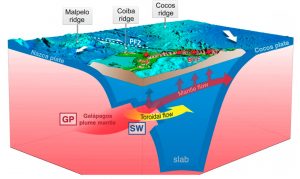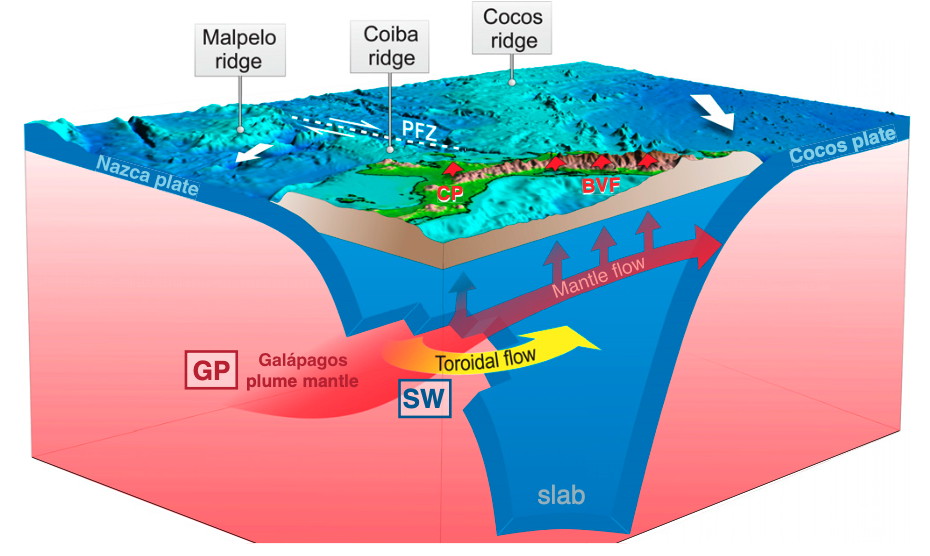
Significance
We report the discovery of anomalously high 3He/4He in “cold” geothermal fluids of central Panama, far from any active volcanoes. Combined with independent constraints from lava geochemistry, mantle source geochemical anomalies in Central America require a Galapagos plume contribution that is not derived from hotspot track recycling. Instead, these signals likely originate from large-scale transport of Galapagos plume material at sublithospheric depths. Mantle flow modeling and geophysical observations further indicate these geochemical anomalies could result from a Galapagos plume-influenced asthenospheric “mantle wind” that is actively “blowing” through a slab window beneath central Panama. The lateral transport of plume material represents a potentially widespread yet underappreciated mechanism that scatters enriched geochemical signatures in mantle domains far from plumes.
Abstract
It is well established that mantle plumes are the main conduits for upwelling geochemically enriched material from Earth’s deep interior. The fashion and extent to which lateral flow processes at shallow depths may disperse enriched mantle material far (>1,000 km) from vertical plume conduits, however, remain poorly constrained. Here, we report He and C isotope data from 65 hydrothermal fluids from the southern Central America Margin (CAM) which reveal strikingly high 3He/4He (up to 8.9RA) in low-temperature (≤50°C) geothermal springs of central Panama that are not associated with active volcanism. Following radiogenic correction, these data imply a mantle source 3He/4He >10.3RA (and potentially up to 26RA, similar to Galapagos hotspot lavas) markedly greater than the upper mantle range (8 ± 1RA). Lava geochemistry (Pb isotopes, Nb/U, and Ce/Pb) and geophysical constraints show that high 3He/4He values in central Panama are likely derived from the infiltration of a Galapagos plume–like mantle through a slab window that opened ∼8 Mya. Two potential transport mechanisms can explain the connection between the Galapagos plume and the slab window: 1) sublithospheric transport of Galapagos plume material channeled by lithosphere thinning along the Panama Fracture Zone or 2) active upwelling of Galapagos plume material blown by a “mantle wind” toward the CAM. We present a model of global mantle flow that supports the second mechanism, whereby most of the east- ward transport of Galapagos plume material occurs in the shallow asthenosphere. These findings underscore the potential for lateral mantle flow to transport mantle geochemical heterogeneities thousands of kilometers away from plume conduits.
![]()

